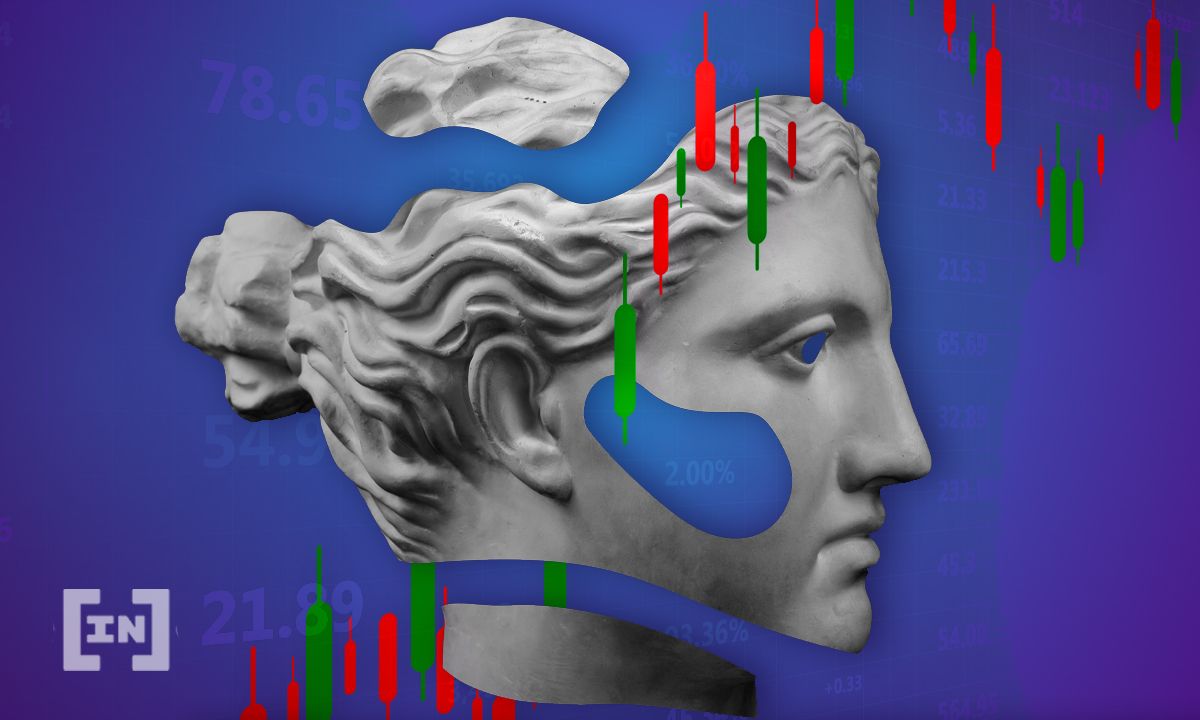Whenever the cryptocurrency market experiences a correction, investors’ emotions run high. Many ask questions about the health of bitcoin (BTC) price movements and predict its bright future or impending collapse. The million-dollar question is “Which phase of the bull market are we currently in?”
Some say the run has just begun, others that we are already halfway through the run and bitcoin price will hit its peak for the year closer to summer 2021.
Others say it won’t happen until December or even next year. Still, there are those who believe that the $58,000 price mark was already the peak of this cycle, and now it’s time for a gradual downtrend. So is this bull market different?
Using bitcoin on-chain analysis data, this piece addresses the key question about the bull market’s current stage. Among the three basic types of crypto market analysis — which are technical (price and its derivatives), fundamental (project basics and news), and on-chain (blockchain indicators) — the latter seems to be the best for trying to determine the stage of the ongoing uptrend.
Second Correction is Underway
Bitcoin is in the middle of a second major correction in the ongoing bull market. So far, the price of BTC hit an all-time high (ATH) of around $58,000 on Feb. 21 and then fell to $43,000 on Feb. 28. Thus, the retracement value is 26%, and the price decline range is a record $15,300.
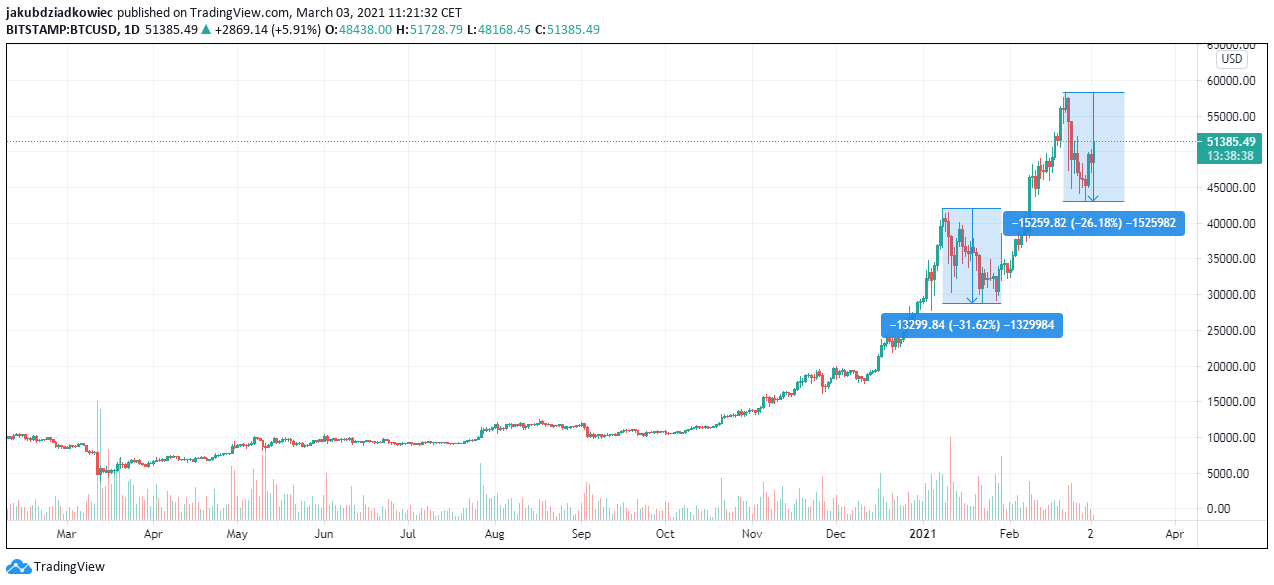
Compared to the first correction, the relative percentage decrease was smaller, while the direct decline in price was more significant. In the previous correction, bitcoin hit $42,000 on Jan. 8 but later fell to just below $29,000 on Jan. 22. The first retracement was, therefore, almost 32% deep, and its range was $13,300.
Currently, BTCs price is hovering around $50,000 and is trying to resume an uptrend that could potentially lead to a new all-time high. However, it is not certain whether this will happen, as a local low may not have been hit yet, or bitcoin may start a sideways price trend.
Nevertheless, another correction is certainly a healthy symptom of a long-term bull market, as it allows many technical and on-chain indicators to reset. Let’s take a look at them in relation to data acquired straight from the blockchain and to market indicators.
On-Chain Indicators Reset
The first indicator is aSOPR (Adjusted Spent Output Profit Ratio), which analyzes the price sold versus the price paid, or the total profit per coin. The current value of this indicator has dropped below 1.0. This is the level at which the aSOPR has not been since the turn of September and October 2020. Even the previous retracement did not drop below the black line.
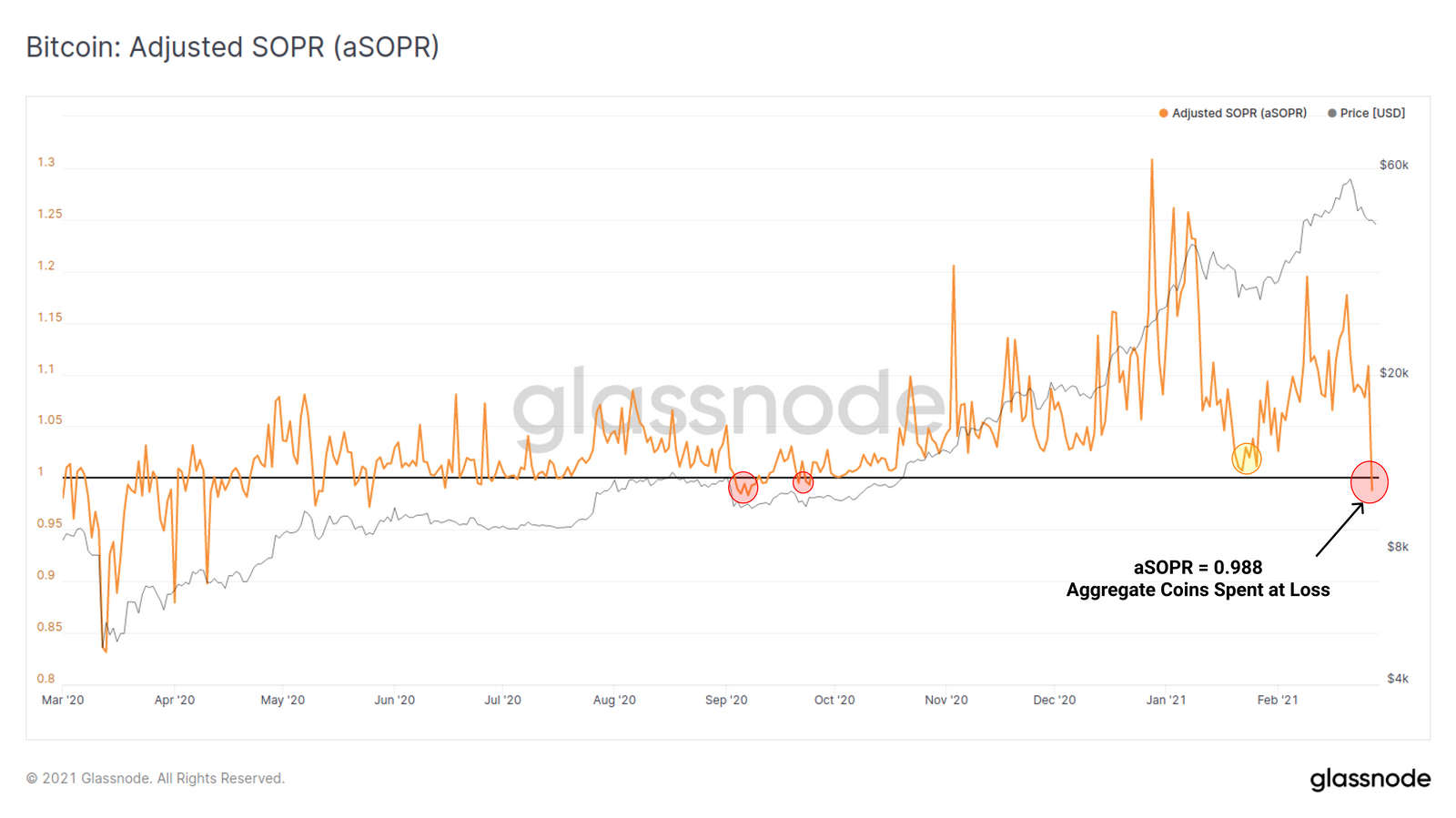
When aSOPR drops around 1.0, it suggests that long-term investors hold their positions and are not selling their BTC. Thus, one can assume that the price drop — probably caused by miners — took place due to new market participants who were panic selling their recent long positions.
Another important indicator is NUPL (Net Unrealized Profit and Loss), which has experienced intense growth in recent months. This is the first cycle so far in which the NUPL indicator has not returned to its standard reset value of 0.5 during the bull market. This level marks around 50% of the entire market cap’s aggregate profit and is an excellent opportunity to buy the dip.
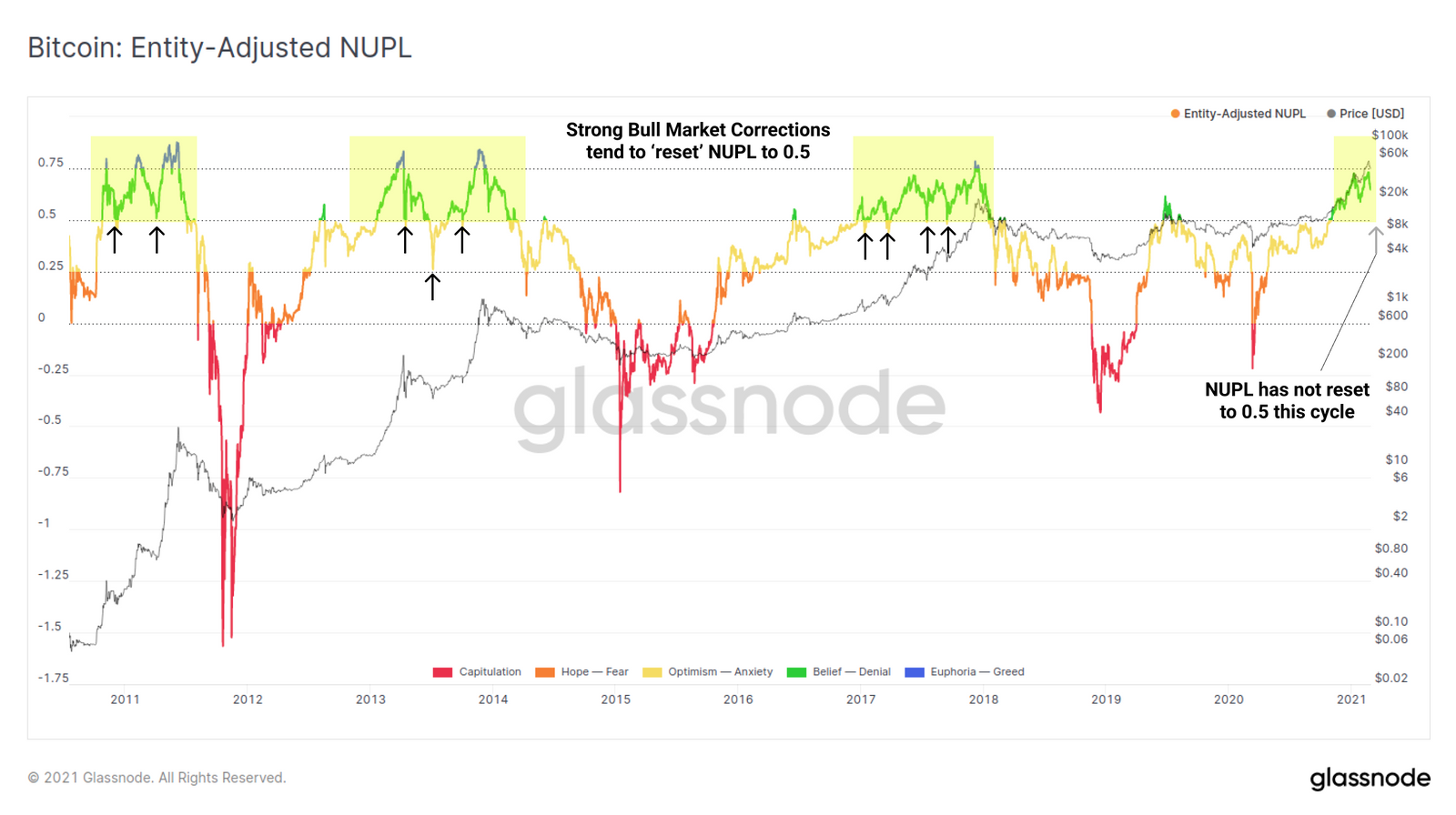
Simultaneously, the NUPL has come dangerously close to the value of 0.75, the crossing of which has historically been a signal for an upcoming peak of the cycle. Due to the current correction, this indicator has a chance to cool down. Nevertheless, its current readings clearly show that investors and traders are going long faster and that hodlers are less likely to sell.
Another on-chain indicator, recently highlighted by Willy Woo, is UTXO Realized Price Distribution. It calculates the volume of coins transacted on-chain at various price levels.
According to Willy Woo, such a price level is $45,000. The analyst added that a possible drop to $39,000 would be extremely lucky and would offer no-brainer longs.
Markets Catch Their Breath
Another consequence of dropping price action in the past weeks was a reset of several market indicators. The first of them shows that the interest in futures contracts has decreased. A chart from Glassnode indicates that it is lower by $4 billion (21.7%).
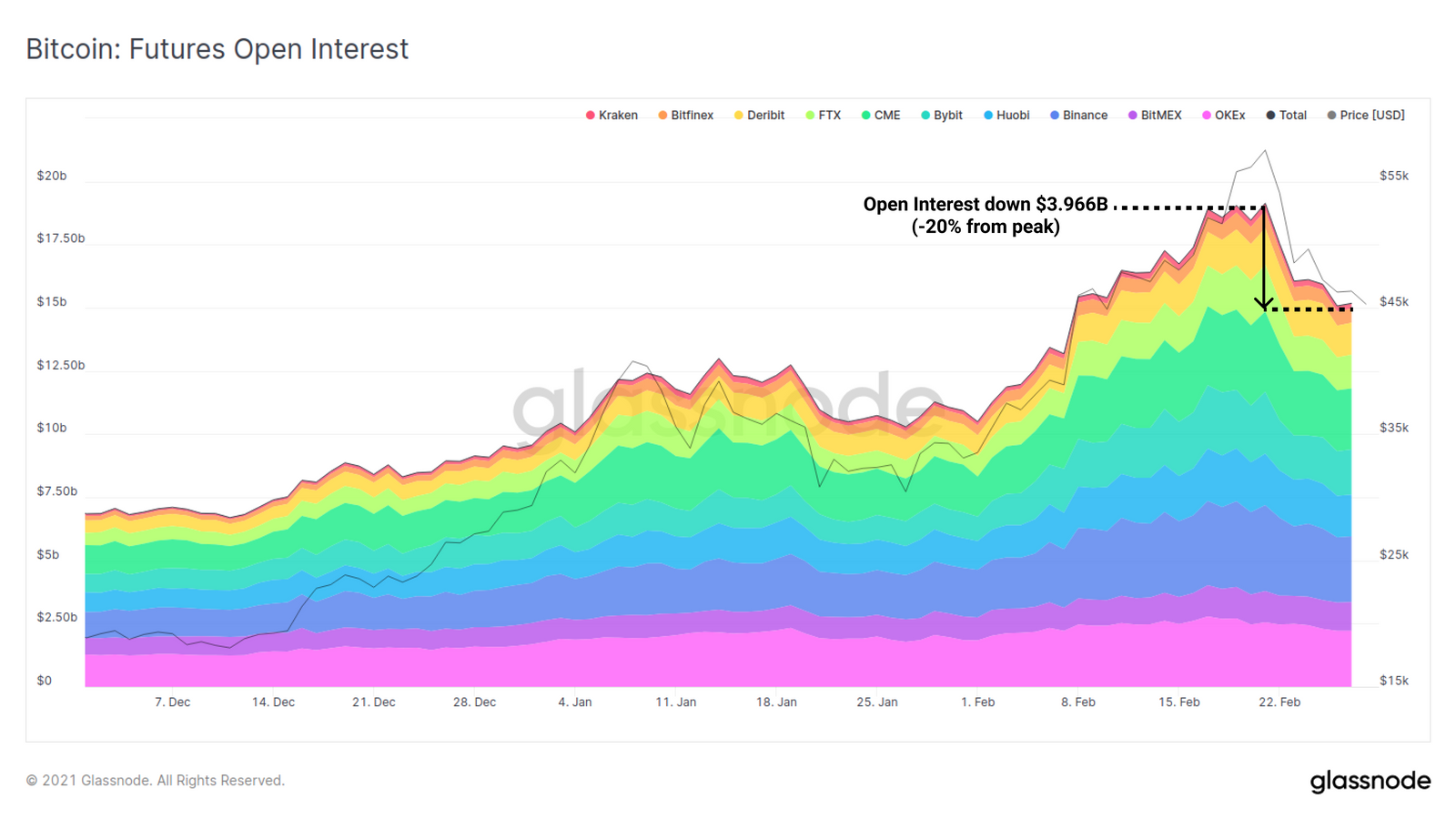
The next indicator shows an almost complete reset of the funding rates for perpetual futures contracts. In the past, this usually preceded another round of speculative increases.

Finally, the last important indicator of an ongoing bull market is a graph of BTC withdrawals from exchanges. This is associated with a deepening decline in their liquidity. This trend has continued for almost a year, from March 12, 2020.

Long red bars indicate that bitcoin is being withdrawn from exchanges, and investors tend to hold it in the long run. Even recent corrections have not changed this situation, which is quite a unique manifestation of this cycle’s strength.
If the above indicators of on-chain analysis are still that strong, then, compared to previous cycles, this bull market is different: longer and more robust. Nevertheless, none of the above-mentioned charts alert us to the impending peak or contain any evidence that the run is over. The ongoing correction seems to be just a healthy breath for the dynamically developing bull run.
Disclaimer
In line with the Trust Project guidelines, this price analysis article is for informational purposes only and should not be considered financial or investment advice. BeInCrypto is committed to accurate, unbiased reporting, but market conditions are subject to change without notice. Always conduct your own research and consult with a professional before making any financial decisions. Please note that our Terms and Conditions, Privacy Policy, and Disclaimers have been updated.


